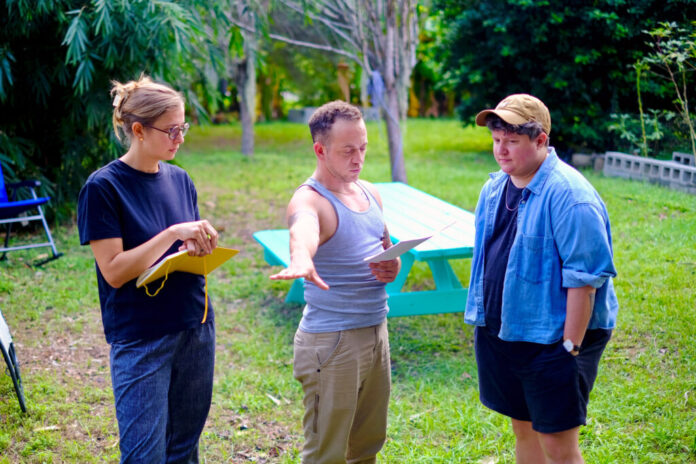"Navigating Storms: Resilience and Community in the Face of Climate Crisis"
Title: Navigating the Aftermath: Community Resilience in the Face of Climate Disasters
By [Your Name]
Lake Pontchartrain, Louisiana — As the sun dipped below the horizon, casting a golden hue over the expansive waters of Lake Pontchartrain, the remnants of Hurricane Francine lingered in the air. Just a week after the storm’s passage, the highway above the lake felt like a fragile lifeline, suspended over a vast waterworld. Chenier “Klie” Kliebert, a dedicated community leader and member of the nonprofit climate justice group Imagine Water Works, navigated the I-10 with a calm demeanor that belied the chaos left in the storm’s wake.
Kliebert, a Native New Orleanian with deep familial roots in the region, pointed to the remnants of a lighthouse, now just sticks jutting out of the water. “We lost that in a storm,” they remarked, a poignant reminder of the ever-changing landscape shaped by climate events.
The Impact of Hurricane Francine
Hurricane Francine, a Category 2 storm, struck on September 11, leaving behind a trail of destruction. While it was classified as a non-evacuation storm, the aftermath was anything but peaceful. Residents faced flooded streets, power outages, and a sweltering Louisiana heat that exacerbated the situation. Kliebert’s team at Imagine Water Works sprang into action, focusing on immediate community needs.
From their base in the Seventh Ward, the team organized a range of initiatives to support those affected. They delivered solar-powered generators, created a “Community Power Map” for charging stations, and facilitated a mutual aid page on Facebook that garnered significant attention during the crisis. Their 2024 Hurricane Season Guide received a staggering quarter million hits, underscoring the community’s reliance on local resources in times of need.
The Role of Community in Recovery
Kliebert’s approach to disaster response is rooted in a philosophy of joy and belonging, even amidst hardship. “We want to leave you with joy and a sense of belonging even though we are doing hard stuff,” they explained. This ethos is reflected in the diverse activities organized by Imagine Water Works, from distributing cooling supplies to clearing debris around their urban farm.
The team’s efforts were not limited to immediate relief; they also focused on long-term resilience. As Kliebert noted, “The storm itself is never the apex of danger—it’s the week after.” This understanding drives their commitment to fostering community connections and providing resources that empower residents to navigate the challenges posed by climate change.
The Broader Context of Climate Disasters
The challenges faced by Kliebert and their team are part of a larger narrative surrounding climate disasters in the U.S. According to the National Oceanic and Atmospheric Administration (NOAA), the past year saw 27 weather-related disasters causing over a billion dollars in damages each. The increasing frequency and intensity of such events highlight the urgent need for effective disaster preparedness and response strategies.
Research indicates that marginalized communities, particularly LGBTQ+ individuals, face heightened risks during and after disasters. A study by Leo Goldsmith, a graduate student at Yale, revealed that LGBTQ+ individuals are nearly twice as likely to be displaced after a storm compared to their straight counterparts. This disparity underscores the importance of inclusive disaster planning that addresses the unique needs of vulnerable populations.
A Personal Journey Through Resilience
Kliebert’s personal journey is intertwined with the broader struggles of their community. Having experienced the devastation of Hurricane Katrina firsthand, they understand the complexities of recovery. “I became one of the million people forced to find a new home,” Kliebert recalled, reflecting on their time in Chicago before returning to New Orleans.
Their commitment to community resilience is evident in their work at Imagine Water Works, where they strive to create a sanctuary for those affected by climate disasters. “It’s about sacredness and life and family and so much culture,” Kliebert emphasized, highlighting the importance of preserving community ties in the face of adversity.
Looking Ahead: Strategies for Resilience
As the 2025 hurricane season approaches, Kliebert and their team remain focused on proactive strategies to support their community. Initiatives like the “A Queer/Trans Guide to Storms” zine aim to equip residents with practical tools for disaster preparedness while fostering a sense of belonging.
Despite the challenges posed by climate change and political turmoil, Kliebert’s unwavering optimism shines through. “We stand firm in our joy and in our belonging even through the storm,” they affirmed, embodying the resilience that defines New Orleans.
Conclusion
The story of Klie Kliebert and Imagine Water Works serves as a powerful reminder of the importance of community in navigating the complexities of climate disasters. As the world grapples with the realities of climate change, the lessons learned from local leaders like Kliebert can guide efforts to build more resilient and inclusive communities. In the face of uncertainty, the spirit of togetherness and joy remains a beacon of hope for those affected by the storms of life.
